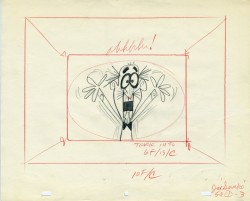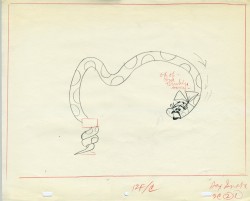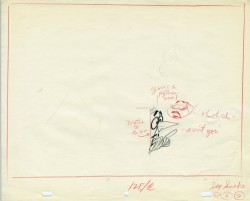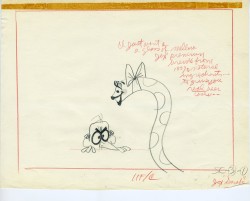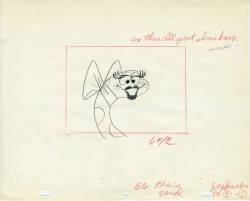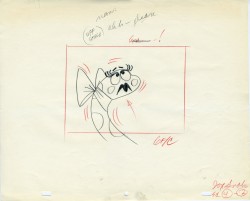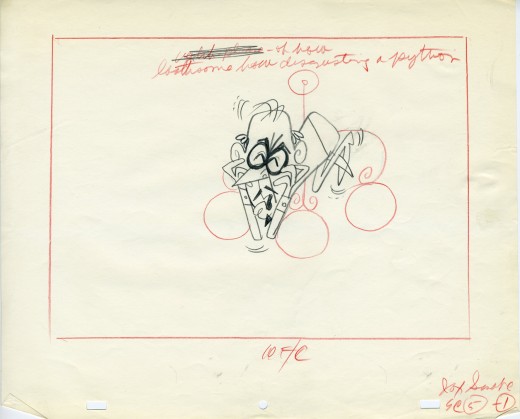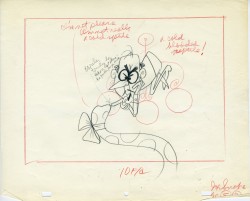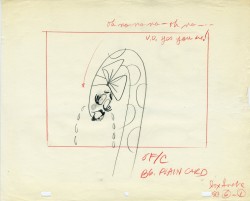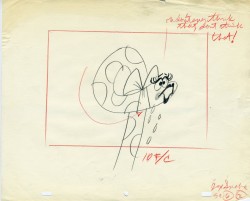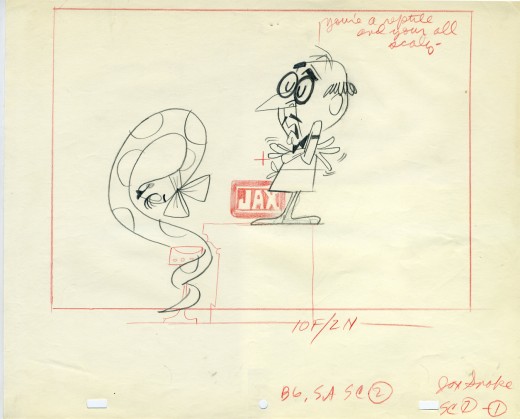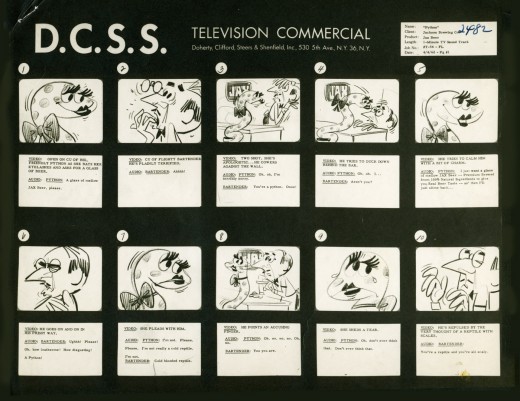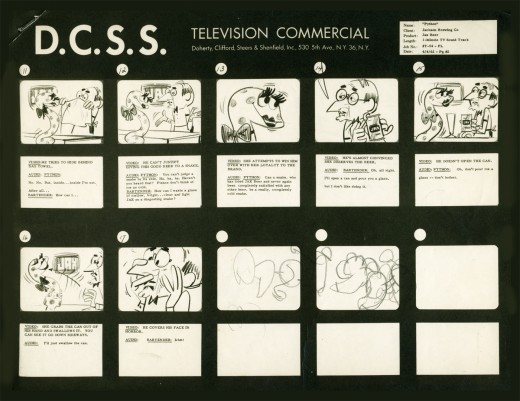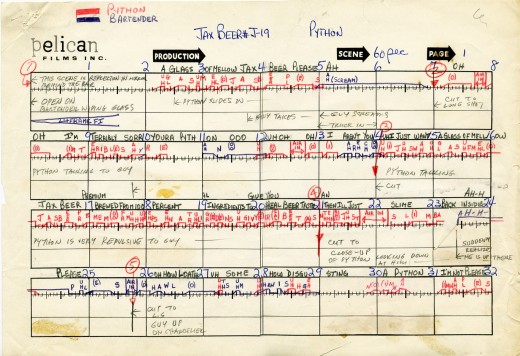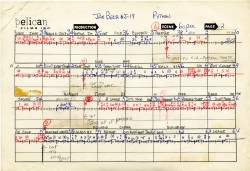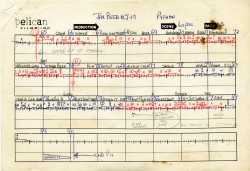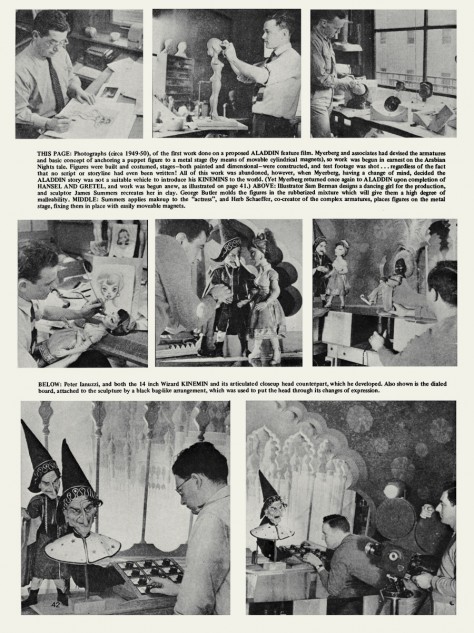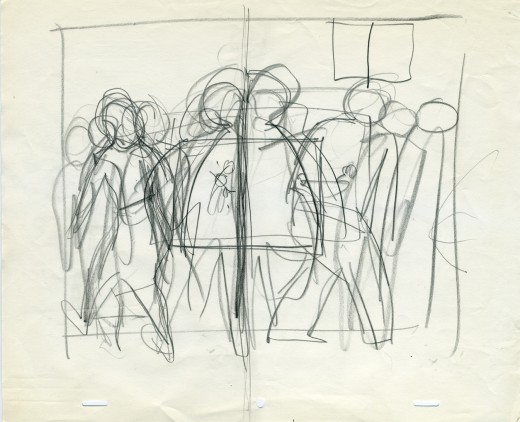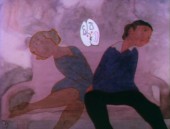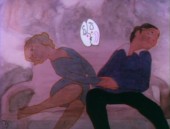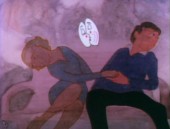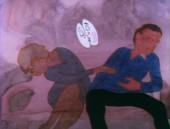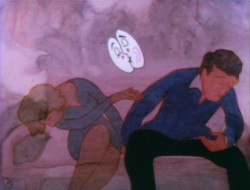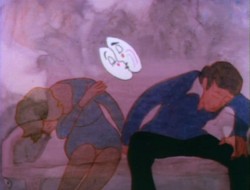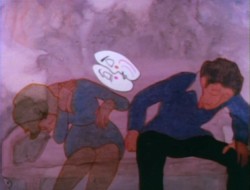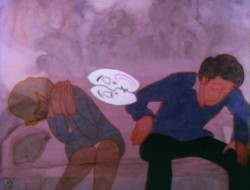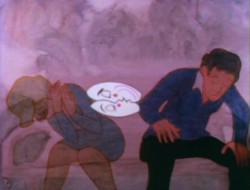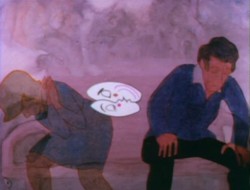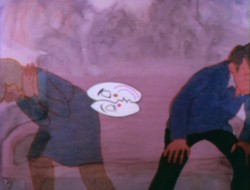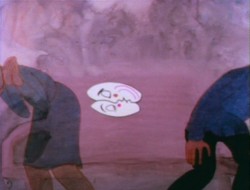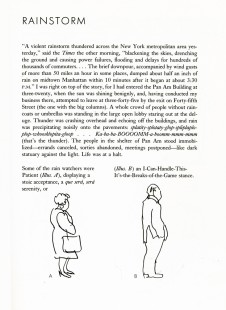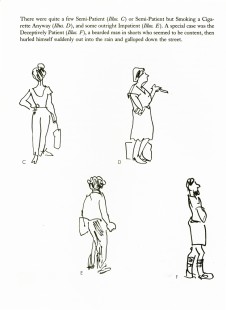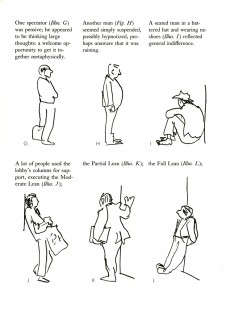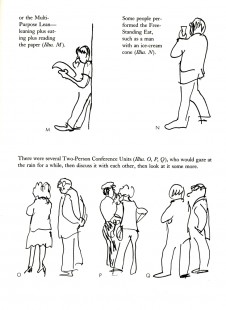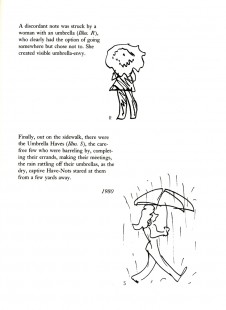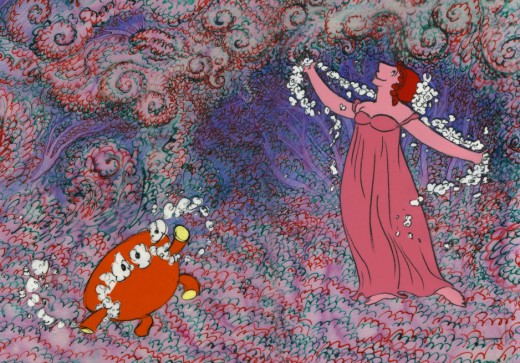Monthly ArchiveNovember 2006
Animation Artifacts 10 Nov 2006 10:25 am
Hans Perk
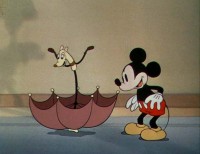 - Hans Perk on his site, A Film LA, has posted what I think is one of the most important pieces on the internet today – as far as animation goes.
- Hans Perk on his site, A Film LA, has posted what I think is one of the most important pieces on the internet today – as far as animation goes.
He has taken the Disney short, Thru The Mirror, and added a click track (aural and visual) to it. This is the finest representation of timing in animation that you’ll find. The cartoon is great, the animation is great, and the click track gives you the same focus the animator had. Go!
There’s nothing more valuable I can report today.
Animation Artifacts &Daily post 09 Nov 2006 09:00 am
Animation Shows & The Wan Brothers
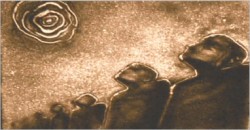 - The 8th Annual Animation Show of Shows will play in NYC on Friday, Nov 10th at 11am.
- The 8th Annual Animation Show of Shows will play in NYC on Friday, Nov 10th at 11am.
The films scheduled include:
He Who Cheats Doesn’t Win (Rajiv Eipe, Kaustubh Ray)
Danish Poet (Torill Kove)
Gentleman’s Duel (Francisco Ruiz, Sean
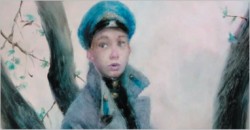 McNally)
McNally)
A My love (Alexander Petrov)
Shipwrecked (Frodo Kuipers)
No Time For Nuts (Chris Renaud, Michael Thurmeier)
Tragic Story With Happy Ending (Regina Pessoa)
Lifted (Gary Rydstrom)
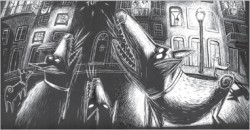 Some of the filmmakers will be in attendance to answer questions afterwards including:
Some of the filmmakers will be in attendance to answer questions afterwards including:
Torill Kove
Marcy Page
Regina Pessoa
Abi Feijo
Chris Renaud, and
Michael Thurmeier
FREE ADMISSION ! Come early, only 260 seats!
- There’s another excellent piece at the ASIFA Hollywood Animation Archive blog. They share with us a nicely illustrated presentation and translation of the biography of the Wan Brothers, who first started animating in China in 1925.
They are the artists behind the Princess Iron Fan, China’s first feature-length film completed in 1941. On the site, you can view both Uproar In Heaven and the documentary biography of the brothers.
Animation &Animation Artifacts 08 Nov 2006 09:14 am
Jax “Snake” LO’s
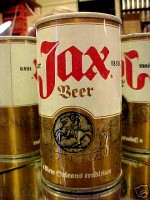 - Continuing with yesterday’s posted Jax Beer commercial, as promised, I am putting up some of the film’s layouts. This represents about 2/3 of them.
- Continuing with yesterday’s posted Jax Beer commercial, as promised, I am putting up some of the film’s layouts. This represents about 2/3 of them.
The art was done by Mordi (Mordicai) Gerstein, who also directed the spot. Grim Natwick animated the spot and Tissa David assisted him. Of course, this was in the days before auido tapes could be handed out, so the animator would get a phonograph of the soundtrack. They could mark it with a white pencil to indicate key spots.
I thought that this in conjunction with yesterday’s prep material gave a good indication of the preproduction that went into making a commercial back in 1962.
That said, here are the layouts:
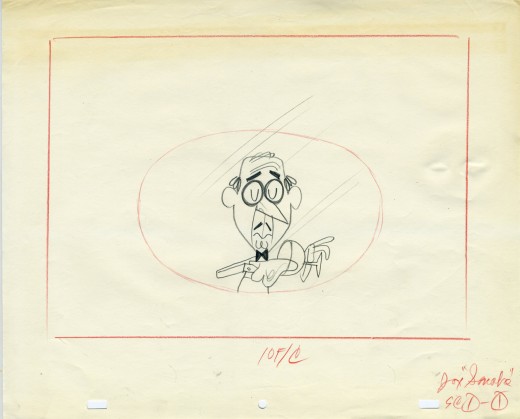
(Click on any image to enlarge.)
Animation Artifacts &Story & Storyboards 07 Nov 2006 08:44 am
Jax Beer Spot
- Here’s the material for a Jax Beer commercial. It was done by a NY studio named Pelican in 1962. There were about 75 people on staff at Pelican back then.
This spot was directed by Mordi (Mordicai) Gerstein. He left animation to write & illustrate children’s books in th 70′s. (He won the Caldecott Medal for his book, The Man Who Walked Between The Towers. This was the book I adapted to animation last year.)
What follows is the storyboard and the director’s workbook. (It appears to be an agency board, though it’s drawn in a style that looks to be Mordi Gerstein’s. Perhaps boards from the agency were drawn by the studios back in 1964; I’m not sure. The layouts were drawn by the same artist.)
Tomorrow I’ll post some of those layouts.
The workbook has several flaps on it that indicate changes in timings. There are also glue stains where I assume other flaps fell off. (See page one, last row, first column.) Each column represents 16 frames/one foot of film. Odd numbers are marked off.
Each row contains 8 feet of film/128 frames. Each page represents 32 feet/512 frames. It would have been smarter to keep to even numbers.
More modern exposure sheets generally have 80 frames/five feet per page. This also divides into two feet of 16mm film. (Handy.) The numbers add and divide smartly and easily. But then most people don’t use exposure sheets anymore.
Animation Artifacts 06 Nov 2006 08:33 am
Myerberg’s Aladdin
- This week I’d received an interesting comment on my “Splog” about Michael Myerberg‘s puppet feature, Hansel & Gretel. Since this post was done a time back, the comment could be easily missed. I’d like to draw some attention to it, since I rather enjoyed it:
I saw this movie during it’s initial run in 1954. I was three years old. The experience made such a lasting impact that it led me into a career in sculpting.
In 1999 I had the opportunity to take molds off the last known remaining puppet. It was of Rosina the Witch and the armatures designed by Jim Summers still worked as beautifully as they must have when the film was being shot.
In the early 1970’s I worked for one of the animators, Sky Highchief, who relayed a lot to me about the actual filming. The original plan had been to do an animated version of Aladdin, but this was dropped in favor of doing Humperdink’s opera as Hansel and Gretel was considered a better commercial risk. The film was shot in sequence. As money started running out for Myerberg and the release date loomed the push was on to complete the project in time. This accounts for the fluid animation at the front end of the film and the rather “muddyâ€, jerky movements of the characters at the end. Also all the Enchanted Children and Angles in the Dream Sequence have the faces of Hansel and Gretel. There was no time to do original sculpting for these puppets so they just pressed what had already been done into service. According to Highchief the New York studio was vandalized shortly after the film was completed and many of the remaining sets and props simply consigned to the trash bins. The film was not a success for Myerberg and plans for other stop-motion films abandoned.
I talked with members of the Myerberg family in early 2000 and they claim that all the original elements of the film are still intact. Considering the awful DVD currently available and knowing it’s place in stop-motion animation history I am amazed that nobody has taken it upon themselves to do a restoration.
from: David Robert Cellitti
As I wrote in response, I do have some information about the Aladdin feature that Myerberg had explored. Here’s the document:
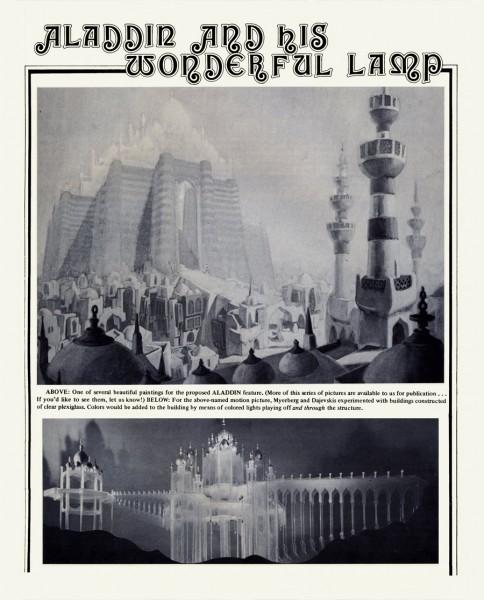
(Click on any image to enlarge.)
Photos 05 Nov 2006 09:47 am
Photo Sunday – After the Big Move, 1989
- These photos come from 1989 just after my studio moved downtown from 34 West 38th Street to 632 Broadway. It was a dynamic new area of NY in the Village that was popping with people. We remained in this space until 2002.
At the time these photos were taken, the studio wasn’t crowded. Those pictured here were among the mainstays for awhile and were with me for a number of years.
The studio, itself, was a big, wide open space. An ex-Art Gallery, it was separated by dividers that contained paints, cels, paper, et al. At one point or another, these dividers housed people preparing the art for camera.
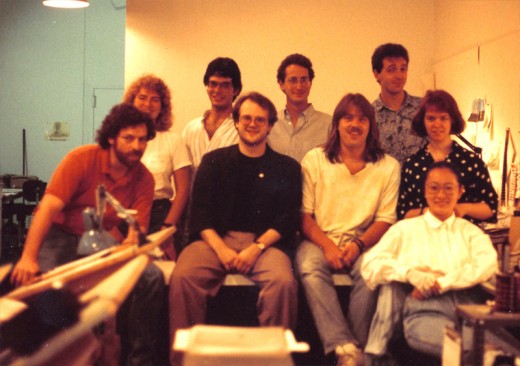
Back row L to R: Theresa Smythe, Mike Winiewski, Ray Kosarin, George McClements.
Sitting L to R: me, Jason McDonald, Steve MacQuignon, Mary Thorne, Masako Kanayama
Above: The wall, just behind us in this group photo, led to an editing room where the editor worked. (At the time it was Greg Perler, who soon moved to Hollywood, and was replaced by Ed Askinazi.) The green room to the back left of the editing area was used for storage. We’d obviously just moved in because the walls here were covered with steel shelving not too long after this photo was taken.
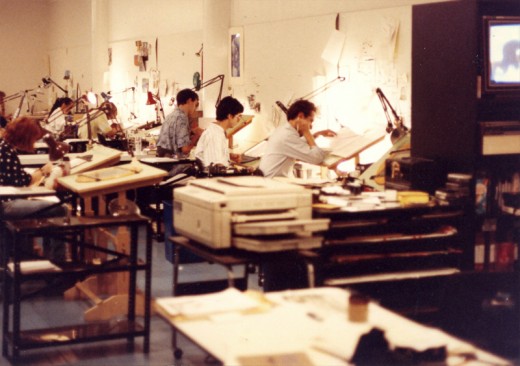
Against the wall R to L: Ray Kosarin, Mike Wisniewski, George McClements, a divider, Steve MacQuignon, Masako Kanayama. Theresa Smythe sat all the way in the back during this photo shoot. Normally, she sat up front.
To the left is Mary Thorne (who most often worked across from me outside of the picture frame.) Out of picture is Jason McDonald just behind Mary.
(Above) This is the studio from my space. In the foreground is a divider and a shelving unit (in which my tape machines & video equipt were housed) which were part of my space.
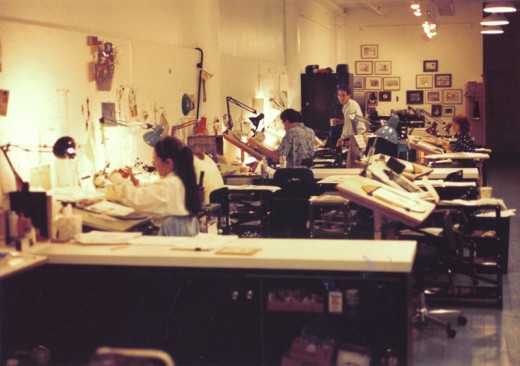
L to R: Masako, Steve (partially hidden), George, Ray (standing), Mary.
(Jason isn’t at his desk. At the time he was a p/t runner/artist; so he may have been on a delivery. He eventually rose in the studio to Art Directing/Bg Artist.)
(Above) And here we are from the back of the studio looking forward. You can get a glimpse of my area all the way at the end, behind the shelving units in back of Ray.
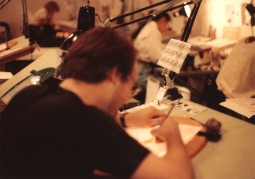 4
4 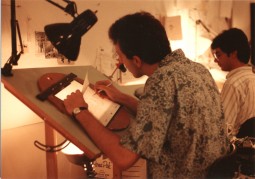 5
5
4. Jason MacDonald, rendering
5. George McClements & Mike Wisniewski, both animating
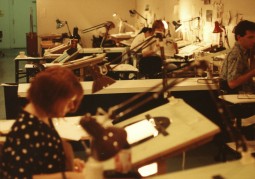 6
6 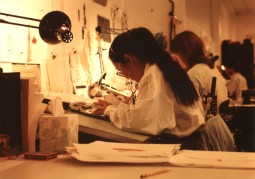 7
7
6. Mary Thorne, rendering on cels
7. Masako Kanayama, production coordinating
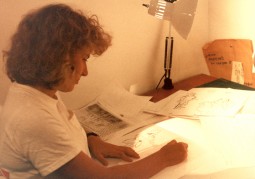 8
8 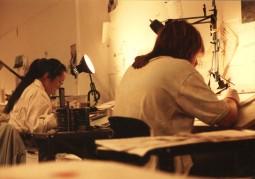 9
9
8. Theresa Smythe, animating
9. Stephen MacQuignon, coloring art
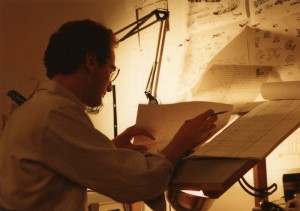 I’m not quite sure what we were working on at the time. I believe we were in the middle of a video called Baby’s Storytime which had Arlo Guthrie narrating favorite tales – mostly Aesop.
I’m not quite sure what we were working on at the time. I believe we were in the middle of a video called Baby’s Storytime which had Arlo Guthrie narrating favorite tales – mostly Aesop.
We were about to start The Red Shoes and a series of six other half-hour shows. We had just completed Abel’s Island and The Hunting of the Snark a couple of months prior.
Things were good at the time.
10. Ray Kosarin, animating
Animation Artifacts &Hubley &Tissa David 04 Nov 2006 09:10 am
Carousel LO
- One of my favorite experiences in my animation career was working on the Hubley film Everybody Rides The Carousel. This was a feature done for CBS. It was adapted from the work Childhood and Society by the noted psychologist, Erik Erikson‘s. His book was a treatise on the development of humans; he broke the stages of man down to eight.
In Hubley’s film, each stage was represented by a horse on the Carousel.
At the sixth stage, my favorite part of the film, two young adults find each other, fall in love, separate and come back together. The female Voice/Over was done by a Yale student in her first film role, Meryl Streep.
Here’s a layout by John Hubley, given to Tissa David for a seminal scene in the film. The boy and girl have fallen in love and present themselves to each other wearing symbolic masks; they cannot reveal their true feelings to each other. The masks, which don’t come off, cause them to grow apart and separate.
In this one rough drawing, John expressed volumes, and Tissa animated what is, to me, possibly the best scene in the film.
To show how it ended up, I’ve taken some key frame grabs from the actual film. The scene actually plays out slowly, and acts as a coda at the height of the sequence.
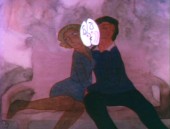 1
1 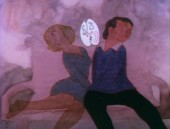 2
2
(Click any image to enlarge.)
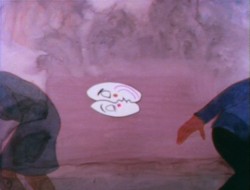 The artwork was colored on layers of vellum designed for architects. It came in rolls and had to be cut and punched. Little of the paper’s grain showed when it was bottom lit. The drawings were inked and colored with magic markers: water based ink lines and alcohol based fill colors. (This prevented the ink lines from smearing.)
The artwork was colored on layers of vellum designed for architects. It came in rolls and had to be cut and punched. Little of the paper’s grain showed when it was bottom lit. The drawings were inked and colored with magic markers: water based ink lines and alcohol based fill colors. (This prevented the ink lines from smearing.)
It was photographed from below – like a pencil test. To soften the background a blank layer of the vellum was used between the background and the characters. The masks were doubled into the scene after it was shot. They were filmed top-lit at 80% exposure.
This was the technique for this one sequence in the feature. Most of the rest of the show was shot traditionally, top lit. Each stage had its own technique and color scheme.
Animation Artifacts &Daily post 03 Nov 2006 08:52 am
Norstein & TCM features
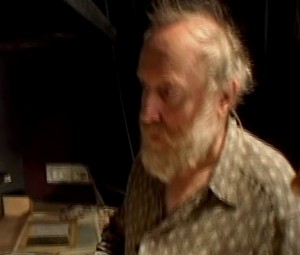 – For those who haven’t seen the Yuri Norstein segment from Winter Days, it has been posted by Daniel Thomas MacInnes at Conversations on Ghibli. Give yourself the two minutes to watch it.
– For those who haven’t seen the Yuri Norstein segment from Winter Days, it has been posted by Daniel Thomas MacInnes at Conversations on Ghibli. Give yourself the two minutes to watch it.
The piece, in a slightly longer version, is on YouTube as well.
There’s a small clip of this work on the Norstein dvd, but watch it in its entirety.
Daniel also posts several other beautiful segments from this amazing film by Kotabe & Okuyama and Takahata here.
- Turner Classic Movies is about to show a couple of animated features on their jam packed schedule for November.
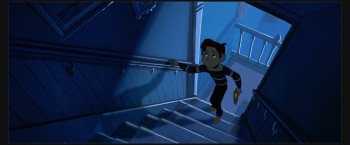 On November 12 at 8:30, they’re screening Brad Bird‘s feature, The Iron Giant. It’ll be nice to see a version of this without endless commercials on television. (Though the DVD release is excellent.)
On November 12 at 8:30, they’re screening Brad Bird‘s feature, The Iron Giant. It’ll be nice to see a version of this without endless commercials on television. (Though the DVD release is excellent.)
On November 12 at 10:00 pm, they’re showing Grave of the Fireflies. For information about this film, I, once again, suggest you go to Conversations on Ghibli.
On November 12 at midnight, Lotte Reineger‘s The Adventures of Prince Achmed will screen. This is the first animated feature, a silent film made in 1927, and if you haven’t seen it at least once, watch it, tivo it or tape it.
Look out for November 12th.
- TCM also continues with the Cartoon Alley series on Saturdays:
Nov 4th at 11:30 AM: Features three Tex Avery George and Junior Cartoons:
Henpecked Hoboes (1946), Hound Hunters (1947) and Half-Pint Pygmy (1948).
Nov 11th at 11:30 AM: Features three WB Bugs Bunny Cartoons:
A Wild Hare (1940), Elmer’s Pet Rabbit (1941) and Hiawatha’s Rabbit Hunt (1941).
Nov 18th at 11:30 AM:: Features three MGM Spike Cartoons:
Counterfeit Cat (1949), Ventriloquist Cat (1950) and Garden Gopher (1950).
(This is repeated Tuesday Nov. 21st at 6AM.)
Nov 25th at 11:30 AM: Features three WB Bugs Bunny/Cecil Turtle Cartoons:
Tortoise Beats Hare (1941), Tortoise Wins By a Hare (1943) and Rabbit Transit (1947).
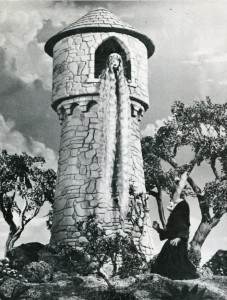 – On Nov 24th, the day after Thanksgiving, Ray Harryhausen is featured. TCM is going to air a number of his fantasy features.
– On Nov 24th, the day after Thanksgiving, Ray Harryhausen is featured. TCM is going to air a number of his fantasy features.
8:00 PM 7th Voyage Of Sinbad, The (1958)
10:00 PM Jason And The Argonauts (1963)
12:00 AM Mysterious Island (1961)
However, the real treat will be the shorts sandwiched in between these features. Harryhausen did a number of fairy tale films that are rarely seen and will certainly be the highlight for the night.
This will be a television premiere that seems to be going unnoticed. Again, get out your Tivos (or in my case tape.)
These can be seen at:
9:45 PM RAPUNZEL (1951)
1:45 AM KING MIDAS (1953)
Flushed Away has opened today. With it there are the reviews. In NYC you get strikingly contrasting views. The NYTimes’ A.O. Scott gives it a glowing review (“…it strikes me as unlikely that any British action picture released this year will surpass “Flushed Away.â€). The NYDaily News’ Jack Matthews is so-so over it. 2½ stars.
I hope Dreamworks makes a bundle and realizes they’ve lost future work with Aardman, an honest and respectable animation studio working with dignity in a world of muck.
Comic Art &Illustration 02 Nov 2006 08:27 am
Stevenson
- I’m a fan of the New Yorker magazine and many of its cartoonists.
Over the years, there have been three who have resonated most sharply with me: Steinberg, Steig and Stevenson. I’ve always felt that these three guys have gone beyond cartoonist to fine artist.
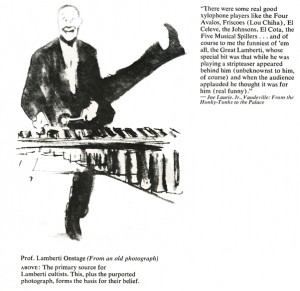 I’ve done films adapted from the work of William Steig and James Stevenson and love both equally.
I’ve done films adapted from the work of William Steig and James Stevenson and love both equally.
Stevenson is less abstract than either Steinberg or Steig. He’s as much a journalist as an illustrator and has written excellent pieces for both the New Yorker and the New York Times, as well.
I love his many children’s books, but the two books which were compiled from his odd cartoon/essays are among the treasures I own and cherish most. Something Marvelous Is About To Happen and Uptown Local Downtown Express can only be called gems.
(Click on any image to enlarge.)
The page above illustrates “The Case Against Prof. Lamberti,” an attempt to disprove the existence of Prof. Lamberti.
Below is a sample essay, I found in Uptown Local, which shows an animator’s sense of observation in depicting body language. This one seems appropriate today since it’s raining in NYC as I write this.
- For those of you who haven’t found it yet, may I suggest you go to the Op Ed section of the NYTimes where Maira Kalman has her column, The Principles of Uncertainty. It’s an extended, illustrated observation that is well worth visiting.
- Also in today’s NYTimes is a Op Art piece by Jules Feiffer. Another excellent piece from this great artist.
Daily post &Tissa David 01 Nov 2006 08:34 am
Midsummer Nights
– Back in 1985-86, Tissa David spent at least half of her time in Europe 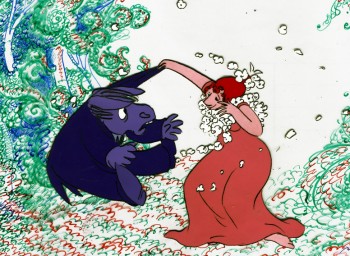 – Holland, to be specific. She was animating and directing an hour television version of The Midsummer’s Night Dream. She continued animating while in her apartment in New York and shipped the drawings out to be colored and shot.
– Holland, to be specific. She was animating and directing an hour television version of The Midsummer’s Night Dream. She continued animating while in her apartment in New York and shipped the drawings out to be colored and shot.
The film took characters from the Shakespeare play, mixed them in with a live-action orchestra which was playing Mendelsohn’s suite, A Midsummer’s Night Dream and brought the animated characters into a fully animated sylvan setting where much of the story takes place.
About a third of it was a combination of live-action and animation, and the remainder was a dance to the music, interpreting the story. There were no words spoken to this version of Shakespeare.
Tissa animated and directed this film. Kalman Kozelka photographed it, did endless effects and xeroxed the art, Ida Kozelka painted the cels, and Richard Fehsl drew/painted and animated the backgrounds. The bg’s are inked on multiple levels of cels, which moved in a multiplane setting. The art was shot from above and below; all the cels acted as their own mattes to create a beautiful luminescence in the final images.
The film was a coproduction of Channel 4, NOS. and SudDeutch TV. I have a vhs copy of the program and would like to pull some stills, but I think the tape is hidden in storage. However, I have a lot more of the art from this show and will post more soon. Each setup uses as many as five cels and is large – all bg cels are prepared for pans and are larger than 12 fld. It takes several passes to scan the art and some of that light effect is lost in the scanning (it’s not bottom lit as well as top lit).
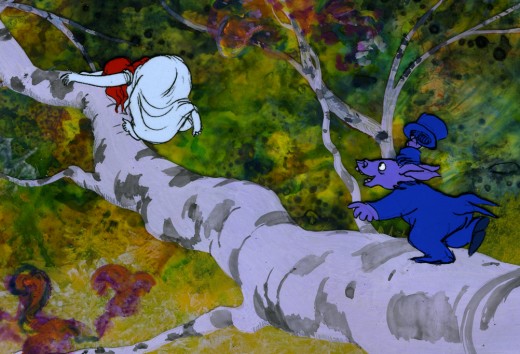
(Click on any image to enlarge.)
